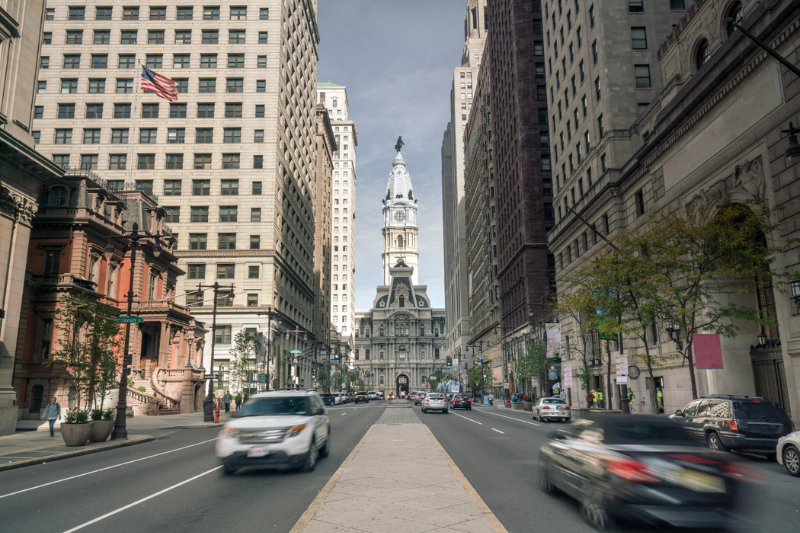Sago recently presented a webinar on the topic of consumer-packaged goods counter trends for a recession. The webinar was hosted by:
- Stan Sthanunathan – Retired Executive VP of Consumer and Market Insights at Unilever
- Ellie Ahmadi – Chief Marketing Officer at Sago
- Issac Rogers – President at Sago
Continue reading as we explore how consumer packaged goods companies can better cater to Gen Z and Millennial customers in the face of imminent recession. Learn the differences between these key audiences and why, in a country with such a young population, their voices matter so much in overcoming upcoming trends in consumer behavior.
Setting the Stage: A Risk of Recession and Economic Turmoil
First, let us explain why we are conducting this webinar.
Consumer packaged goods companies express concerns over imminent recession and economic downturn. Perhaps more concerning is the lack of experience leaders have in navigating businesses through tough economic conditions.
Isaac Rogers:
“There are a lot of people leading insight practices, or members of management at research agencies, that have experienced nothing but a positive economic outlook for the last 10-12 years […] but change is on the economic horizon, and a lot of people have never been through this.”
Isaac continues:
“What we wanted to do is to bring in Stan, Ellie, and myself to provide perspective about what we personally experienced through periods of economic change. So, you’re going to hear a little bit about our perspectives, what we’ve been through during our time in the industry and in marketing, and I think you’ll learn a lot today.”
Should We Focus on Specific Generations More Than Others in a Recession?
Stan Sthanunathan communicated an interesting viewpoint on why it is important to focus on some generations—such as Gen Z and Millennials—more than others during a recession.
Stan said:
“Thank you for introducing me. I want to put into context that I have lived through eight generations. Maybe not in the first decade, but other decades have seen some form of recession. Growth is actually a huge challenge for most large corporations.”
He continues with a metaphor:
“If you go and fish in the same pond, you’re going to deplete the fish, and you will catch less-and-less fish. If you really want to grow, you need to look at markets and opportunities in a very de-averaged way.”
This refers to a segmented approach to growth, as opposed to a spray-and-pray strategy. The spray-and-pray approach is expensive and proven to not generate results. When businesses de-average their approach to growth, it leads to the conclusion that customer lifetime value (CLV) is very important, particularly for CPG companies.
Stan adds:
“In categories consumed by people, such as automotives or CPG, CLV is very important. [CLV] tells you that you’ve got to recruit people early on, and that drops off into who are the segments of people you should go for to secure your business both for today, and tomorrow […] that’s the reason I say it’s important to focus on Millennials and Gen Z. These generations have a lot of runway ahead of them […] recruiting them today won’t guarantee loyalty forever, but at least they’ll have a favorable disposition towards you because they’ve been associated with you for a long time.
Exploring the Idea of Recruiting Customers for Researchers and Brand Managers
This philosophy present the idea of ‘recruiting customers’.
Isaac Rogers added:
“If you’re a researcher or brand manager listening to this, what [Stan] is really saying is to focus your research – not on the broad horizon, but on who are the customers I want to recruit in this economic cycle to maybe have on the backside of this recession.”
This means investing in customer relationships early and now, so those relationships bear fruit in less fruitful times. It also requires strategic planning to obtain the right customers now, that are most likely to stick with you through a recession later.
How Do Gen Z and Millennials Differ from Past Generations?
Ellie Ahmadi posed a question to Stan:
“You could argue that in the last financial downturn, it was a different generation in the thick of it. Thinking of these audiences as a whole, how do you see differences between Gen Z and Millennials from past generations?”
First, Stan explained the economic context for Boomers versus Gen Z and Millennials. His points are summarized below:
- Gen Z and Millennials will never be as rich as their Baby Boomer counterparts
- Baby Boomers are the richest generation today
- Baby Boomers have not previously experienced this level of inflation, whereas Gen Z and Millennials are—right now.
He continued with some interesting statistics:
- The average Millennial holds $100,000 of debt.
- 80% of Millennials are concerned about an upcoming recession and high inflation.
- In contrast, only 33 percent of Boomers are worried about recession and inflation.
- 1/3rd of Millennials say they are living paycheck-to-paycheck.
- Interestingly, Gen Z is putting away 14 percent of their money towards retirement—at a much higher level than Millennials.
Stan Sthanunathan concluded by saying:
“We have got to keep these important statistics in mind when devising strategies to capture Millennial audiences. The CLV for this group will be very high, despite the short-term financial pain right now. One has to keep in mind how they talk to Millennials, in context of the problems they face.”
He then commented on how Gen Z audiences differ from Millennials:
“Gen Z is putting 14 percent of their money towards retirement […] that basically tells you these people are becoming more pragmatic and thoughtful in their approach to education, work, and savings. You’re going to have many Gen Z consumers who are thoughtful about spending versus splurging. Gen Z does not have the Millennial mindset of living paycheck-to-paycheck.”
In summary, while Gen Z and Millennials are adjacent cohorts, they think about the world and finances very differently. A failure to understand these differences could run the risk of missing out on future opportunities with these two groups.
A Marketer’s View: The Need for Authenticity from Gen Z and Millennials
Ellie Ahmadi added her view as a marketer in relation to Gen Z and Millennials demanding authenticity in their brand relationships:
“As a marketer, commonalities between both Gen Z and Millennials are the need for authenticity. Millennials have really brought authenticity to the forefront. Gen Z is building upon and looking for that – looking to have a voice. They are looking for that authenticity.”
This coincides with the emergence of social media influencers: individuals with a large social media following who influence consumer behaviors through their content. Gen Z and Millennials are particularly sensitive to this influence.
Ellie continued with how authenticity impacts behaviors:
“When the channel no longer seems authentic, they migrate to another channel. I think the contradiction is, for those social media influencers that we follow – they are not looking to be authentic. They are looking to be famous […] they are looking for brands to come in, pick them up, and offer them more – which takes audiences out of that authenticity. It seems to be a constant chase from these generations to find the true authentic voice.”
The Social Media Influencer and Brand Authenticity
This presents an opportunity for brands. Combining the audience reach of social media influencers, with the need for authenticity.
Ellie asked for further comments on this topic.
Isaac Rogers commented:
“Speaking more from the consumer or research side, when I think about the authenticity of the influencer, I think that’s an interesting angle. It builds on what Stan was saying about how to think of the financial position of Millennials and Gen Z, then I think of authenticity in the influencers.”
Isaac suggested that businesses ask the following questions when developing authenticity internally or considering engaging with influencers:
- Should I walk away and be less concerned about my overall brand image, opposed to these hierarchies and goals I have for how people feel?
- Do I want to be more pragmatic about the value my products deliver?
- In advertising or packaging designs, do we focus on communicating forward-thinking brand feelings, or do we focus more on being authentic and real about the value this product conveys and the job to be done?
Social Media Echo Chambers and Gen Z or Millennial Cynicism
Next, Stan built on Issac’s points:
“Yes, this certainly resonates. Let’s keep in mind how Gen Z and Millennials recognize that they are not laying on a bed of roses. They also recognize that sometimes they operate in echo chambers, particularly on certain social media platforms […] that’s where Ellie’s point on authenticity becomes really important.”
Stan continued by explaining the relationship between influencers, audiences, and how it impacts large corporations:
“When a YouTube or Tik Tok celebrity influencer produces content, Gen Z and Millennials consume it – but they are pretty savvy. They know exactly why they are consuming it […] the role the content plays. If authenticity is lacking in a brand, these two generations will not cut you any slack… they’ll be ruthless about it. They will immediately become cynical about the brand, to your doom. This shows how authenticity is not an optional conversation. You could have a great product, but if the presentation to consumer groups is inauthentic, it’ll be difficult to recruit them as customers.”
Ellie Amadhi added:
“I think how it relates to us brands and researchers is that we need to understand how consumers think, what their needs and desires are, and to understand what they are looking for. Just engaging with them and trying to listen, that becomes a continuous process for us.”
In the Face of Change, Which Brand Strategies Lead to Success or Failure in Recession?
Core audiences for businesses are changing rapidly. Brands need to think about recruiting these audiences early and cultivating relationships in response.
Isaac Rogers asked Stan Sthanunathan:
“A lot of brand agencies and people ask: what do we change? In your history, what strategies really did work […] and which were total train wrecks? What did people try that was just the wrong direction during a period of recession?”
Stan discussed cutting spending and price raises:
“First, do not cut back on spending during a recession. The data suggests that those who continue to spend on brand building or developing brand authenticity emerge stronger after recession.
Second, do not raise your prices above the inflation rate. This is tempting as you have a quarterly deliverable in terms of operating income […] but consumers will not cut you slack. Instead, they will punitively punish you.”
Stan then mentioned the importance of market research and price points:
“Third, in a recessionary environment – price point is more important than price per gram, or price per milliliter. This is where research can play a big role in identifying the pricing sweet spot and avoiding lost transactions. In a recession, this is mission critical as brands that lose transactions or market penetration struggle to get it back post-recession.”
This reflects how consumers are constantly looking for value. One way to give value in a recessionary environment is by focusing on the functional delivery and efficacy of the product.
Stan continues:
“In times like this, when you’re living paycheck-to-paycheck, the last thing you want is to buy a product that doesn’t deliver. Under normal circumstances, you might think it’s fine and buy something else next time […] but now people don’t have that luxury. Functional superiority is something that appeals to people in a big way.”
Another common trap for businesses is reducing the quality of products to improve operating margins. The product is what generates value; taking away features or quality controls reduces the value of the product and thus its appeal to consumers.
Stan warns businesses:
“If you reduce the product quality, it will have a catastrophic effect. Please do not touch the product quality. Businesses are always balancing product quality and price points against revenue growth and operating margins. But one has to make clear what you should not compromise on, and what you should compromise on. If brand equity drops, what is the long-term impact? If product quality is inferior to the competition, what is that impact? Please use research to find out what you should and shouldn’t prioritize.”
What is Different About This Period of Economic Uncertainty, and How Can Global Brands Plan Their Research?
As a final question, Stan was asked by Isaac about what makes this recessionary environment different from previous events:
“Over the last few decades, I’ve seen quite a few recessions. But they were localized. They do spill over because we live in an interconnected world, but usually start in one geography; the 1997 Asian financial crisis, the 1982 Latin America wage crisis, the 2007 USA subprime crisis.”
In contrast, the current recession is global:
“This recession is different as it’s global, but the reasons vary per region. China was COVID. Europe was the Ukraine War and gas prices. USA was oil prices and central bank interest rates. Recession is happening in different regions for different reasons, but the triggers all happened at the same time. Given that the world is more interconnected today than ever, when it is happening at this scale it can be quite severe if not managed by the central banks. That’s the structural difference between this recession and others.”
Question Time: Answering Questions from Viewers
The first question was for Ellie Ahmadi:
Question – In your experience, what are marketers thinking about as we approach a recession or economic downturn?
Ellie Ahmadi – “Speaking from last time, where I was in a B2B environment. Most organizations ask marketing departments to cut back on spending. We have to be mindful as a lot of times we cut back on ‘big spends’ such as conferences, like we saw with COVID. Engagement with customers becomes more digital in recession, similar to COVID. Digital channels, where marketers make the most impact, become much more targeted. Who are those truly high value customers? We have to spend more dollars on targeting these customers. Then we ask what channels are these customers in: such as social media, marketing, and influencers. This is where authenticity still plays a role. But as Stan pointed out, consumers might be less likely to spend money on big luxury items. If your product is a big luxury item, how do you stay on top of mind and connected with customers in the long-term? Also, how can you make an impact on consumers day-to-day needs right now? In summary, marketing efforts become more targeted, maybe more digital – but the marketing itself does not go away.”
The next question was answered by Isaac and Stan:
Question – How are research agencies responding to a recession and economic downturn?
Isaac Rogers – “This topic has come up a lot over the past several months, hence why we’re having this webinar. I joined the industry on the tail end of the last big recession, and saw the effects play out. I noticed some things last time, and some of the same things again this time. People are looking at the scope of projects and asking what is important, or what’s meaningful to get out of this? Perhaps a second phase to the project would’ve been nice to have. They’re really trying to focus on what’s core to their audience. Let’s say we want to study millennials and make sure we are recruiting and keeping a core audience of our product, and talk about the product value differently than in the past. Don’t complicate things, and don’t lose focus on the primary audience you are researching. People tend to want to rely on partners and agencies to spread research budgets as far as possible. Research may change from an internal project, to outsourcing to partners as you lack the internal capacity. This is why qualitative research is near and dear to my heart, because you need to understand the changing customer experience (CX) and what it’s like.”
Stan Sthanunathan built on this point – “I want to build on that Isaac. Every time a big recession happens, I’ve noticed that demand for research actually remains flat, or increases. It certainly doesn’t come down. Why is this? One recent report said that the research industry has grown about 16% in 2021. Some agencies say I experienced a decline in revenue; I did not grow as fast; my ad testing has not grown; my product testing has not grown. That’s because they are looking at growth the wrong way. Looking at growth for individual products is like trying to push water up a hill. What you need to do is present yourself as someone that can solve client problems. Research is one of the biggest growth drivers of all available options, and greatly lowers risk.”
And the final question was answered by Stan:
Question – What advice do you have for CPG brands to get through this recession?
Stan Sthanunathan – “Do not lose market penetration. Do not lose your user base. Getting it back becomes much more expensive. Do what it takes to protect and grow your user base. This is not a user base for each individual brand in your portfolio. If you have four different brands of shampoos straggling different price points, make sure you have not lost the user. People might trade from one internal brand to the other, they may trade down. But as a company, you haven’t lost. When the recession goes away, you can graduate these people to a more premium brand. Do not lose the user base, it is a disastrous thing for the business.”
Summary
Thank you for reading this webinar on CPG Counter Trends for a Recession.
Recession and economic turmoil are creating risks for businesses. One way to overcome these risks is by targeting market research to specific generations: Gen Z and Millennials. This helps businesses to recruit consumers and build lifelong relationships that increase customer lifetime value (CLV).
Remember that these generations are reducing spending in face of recession, with Millennials holding $100,000 of debt on average. Understanding thoughts, feelings, and beliefs that influence buying behaviors will help companies cater to these audiences more effectively. One particular feeling to focus on is authenticity. Younger audiences are quick to sense inauthenticity and become cynical of brands.
To book a consultation with Sago for your next research project, contact [email protected].










 16 Minutes
16 Minutes 












